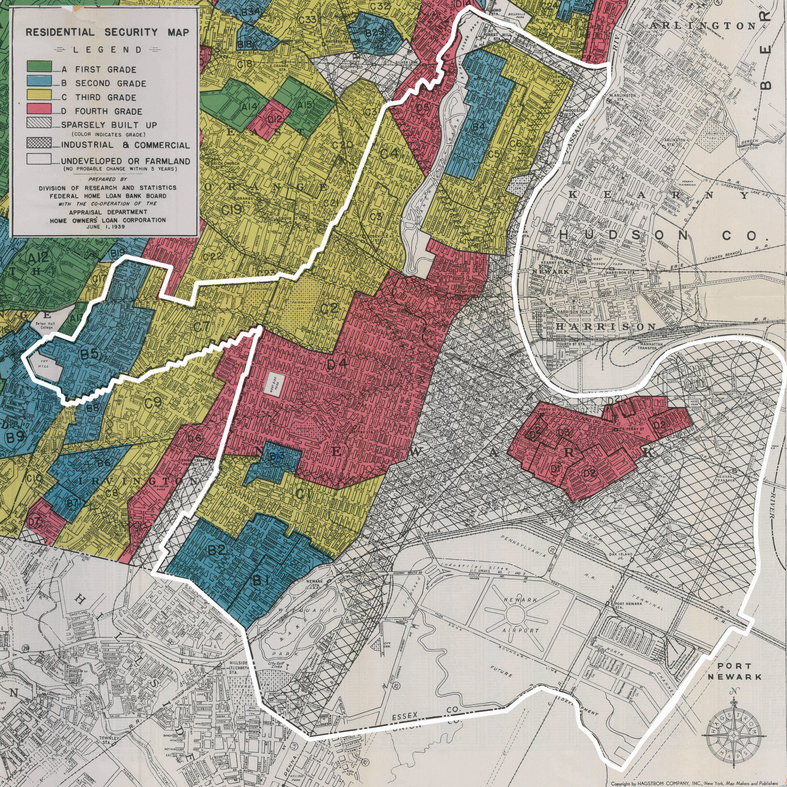The design of space has everything to do with race. Depending on the intentions of planners, architects, and politicians, urban space can be designed to unite or divide people. Throughout history, buildings have been used as symbols and tools of power: The plantation house facilitated the enslavement of Blacks; the superhighway sliced through the city and separated Black neighborhoods from White neighborhoods; the public housing project concentrated Blackness and poverty in the same place; the slum clearance projects disproportionately displaced Blacks from the communities they had built over generations. All these and more are examples of how race, architecture, and power are intertwined as tools against the less powerful.
Newark history, too, has its share of highways, slum clearance projects, and urban renewal efforts that all shaped and continue to shape the city we know today. Newark’s vacant lots, empty stores, and architecturally monotonous streetscapes were once colorful, historical, and visually interesting neighborhoods, most of them Black neighborhoods. By looking at and thinking about Newark through the lens of racializing space, this website guides visitors to re-interpret and understand how and why their city has changed through time. And hopefully, by understanding how racial prejudice and White flight produced the divided metropolis, we can take efforts to preserve the historic architecture that survives and to rebuild an egalitarian metropolis.


